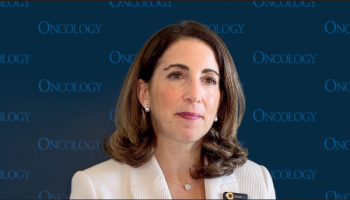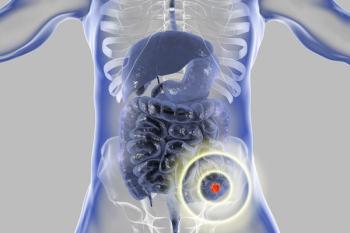
Chemo Plus Veliparib Improves Responses in BRCA-Mutant Breast Cancer
Adding the PARP inhibitor veliparib to carboplatin and paclitaxel chemotherapy significantly increased response rates among women with BRCA1 or BRCA2 mutations and locally recurrent or metastatic breast cancer, according to a randomized phase II trial.
Adding the PARP inhibitor veliparib to carboplatin and paclitaxel chemotherapy significantly increased response rates among women with BRCA1 or BRCA2 mutations and locally recurrent or metastatic breast cancer, according to a randomized phase II trial.
“Existing homologous recombination DNA damage repair defects in tumors with BRCA1/2 mutations make them particularly sensitive to PARP inhibitors, which interfere with DNA damage repair,” said Heather S. Han, MD, of the Moffitt Cancer Center in Tampa, Florida. She presented the new study at the San Antonio Breast Cancer Symposium (SABCS), held December 6–10, and spoke during a press conference on Wednesday.
Veliparib is a potent inhibitor of PARP-1 and PARP-2, and earlier research has suggested promising clinical activity when combined with chemotherapy. This was the first study comparing the drug with placebo in patients undergoing carboplatin/paclitaxel chemotherapy specifically in patients with BRCA mutations and recurrent/metastatic disease.
A total of 290 patients were included in three study arms, though one arm where patients received veliparib and temozolomide was not included in this analysis. A total of 97 patients received veliparib and chemotherapy, and 99 received placebo with the same chemotherapy regimen. More than half the patients included had hormone receptor–positive disease, about 40% had triple-negative disease, and very few patients were HER2-positive.
The overall response rate was 77.8% with veliparib, and 61.3% with placebo (P = .027). There were few complete responses (4 with veliparib, 3 with placebo). The duration of response was similar in the two groups, at 11.7 months with veliparib and 11.1 months with placebo.
Progression-free survival was numerically better with veliparib, at 14.1 months vs 12.3 months with placebo, but this did not reach significance with a hazard ratio (HR) of 0.789 (95% CI, 0.536–1.162; P = .231). Overall survival showed a similar non-significant trend, at 28.3 months with the study drug and 25.9 months with placebo for an HR of 0.750 (95% CI, 0.503–1.117; P = .157).
Veliparib did not increase toxicity when added to chemotherapy. In the veliparib group 78.5% of patients had a grade 3/4 adverse event, compared with 83.3% in the placebo group; common grade 3/4 adverse events included anemia, febrile neutropenia, leucopenia, diarrhea, and fatigue, among others. Most adverse events, Han said, could be attributed to carboplatin, and the rates of interruption, dose reduction, or discontinuation were similar between arms.
Han said the combination of veliparib and this chemotherapy regimen is being studied further in the phase III randomized BROCADE3 trial.
“The response rate … is extremely clinically meaningful for our patients that are symptomatic, and most of our metastatic patients are symptomatic,” said Virginia G. Kaklamani, MD, of the UT Health Science Center in San Antonio and co-director of SABCS, during the press conference. She noted, though, that in order to be approved and used the regimen will need to show significant improvements in progression-free survival and/or overall survival.
Newsletter
Stay up to date on recent advances in the multidisciplinary approach to cancer.



![Point-of-care manufacturing, scalable manufacturing, and bringing the cost down [can help].](https://cdn.sanity.io/images/0vv8moc6/cancernetwork/55a279b707f0cd71181a5efa8b3d3cd864555701-3002x1684.png?w=350&fit=crop&auto=format)















































































